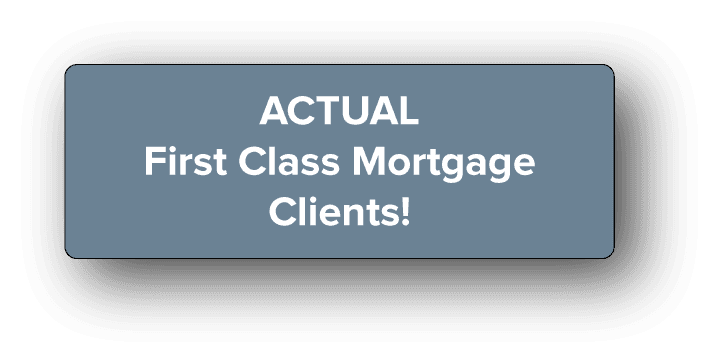Key Takeaways
- Minnesota homebuyers typically put down 5%–10%, but some programs allow as little as 0%–3%.
- Down payment amounts vary by loan type, location, and borrower profile.
- First-time buyers have access to down payment assistance through programs like Minnesota Housing Start Up.
- 20% down eliminates PMI, but many buyers purchase with less and remove PMI later.
- Saving strategies, gift funds, and flexible financing can all help lower upfront costs.
- Work with a local lender like First Class Mortgage to explore options tailored to your situation.
Average Down Payment on a Home in Minnesota
Planning to buy a home in Minnesota? One of the first questions most buyers ask is: “How much do I need for a down payment?” The answer depends on several factors, including your loan type, budget, and location. While 20% is often mentioned as the “standard,” most Minnesotans put down far less.
This guide breaks down the average down payment on a home in Minnesota, explains what affects it, and offers tips to help you prepare for your home purchase with confidence.
What Is the Average Down Payment on a Home in Minnesota?
In 2025, the average down payment in Minnesota falls between 5% and 20% of the home’s purchase price.
For example:
- On a $325,000 home (close to Minnesota’s median home price), that’s between $16,250 and $32,500.
- Many first-time buyers put down less than 5% thanks to special loan programs.
While 20% is ideal for avoiding mortgage insurance, it’s not required—and in most cases, it’s not realistic for new buyers.
What Are the Minimum Down Payment Requirements?
Minimum down payments in Minnesota vary by loan type:
- Conventional Loans: As low as 3% for qualified buyers
- FHA Loans: Minimum of 3.5%
- VA Loans: 0% down for eligible veterans and service members
- USDA Loans: 0% down for homes in eligible rural areas
Keep in mind: the lower your down payment, the more likely you’ll need to pay private mortgage insurance (PMI).
Does Location Affect the Down Payment Amount?
Yes. Down payments are typically based on a percentage of the home price, which means location matters.
- In Minneapolis-St. Paul, homes tend to be more expensive, so even 5% can be a significant amount.
- In rural or small-town Minnesota, where prices are lower, your down payment may be more manageable—even at higher percentages.
Homebuyers in high-cost counties may need to explore jumbo loan options if the price exceeds conforming limits.
Are First-Time Homebuyers in Minnesota Putting Down Less?
Yes. Many first-time homebuyers in Minnesota put down between 3% and 6%.
This is made possible by:
- First-time buyer loan programs
- State-level down payment assistance
- Flexible lending options for creditworthy borrowers
At First Class Mortgage, we help first-time buyers explore every available option to reduce upfront costs without compromising long-term value.
What Down Payment Assistance Programs Are Available in Minnesota?
Minnesota offers several down payment assistance options:
- Minnesota Housing Start Up Program: Offers loans up to $18,000 for first-time buyers
- Monthly Payment Loan: A 10-year loan with low interest
- Deferred Payment Loan: No payments required until the home is sold, refinanced, or the loan term ends
- Local grants from counties and cities may be available as well
Each program has eligibility requirements based on income, location, and home price. A local lender can help match you to the right one.


What Is the Ideal Down Payment to Avoid PMI?
To avoid private mortgage insurance (PMI) on a conventional loan, you’ll typically need to put down at least 20% of the home’s purchase price.
However, PMI isn’t always a dealbreaker—it can often be canceled once you reach 20% equity. Many buyers choose to accept PMI temporarily to secure their home sooner.
A mortgage advisor can help you compare monthly payments with and without PMI to find the best fit.
How Can I Save for a Down Payment in Minnesota?
Here are some smart strategies to help Minnesotans save:
- Open a dedicated savings account or high-yield account
- Set a monthly savings goal, even if it’s modest
- Use windfalls (tax refunds, bonuses, gifts) to boost savings
- Explore matched savings programs and housing grants
- Cut housing costs now (renting with roommates, downsizing)
First Class Mortgage can also help you understand realistic down payment targets based on your income and home goals.
Can I Use Gift Funds or Other Sources for My Down Payment?
Yes. Many buyers use gifted funds or other non-savings sources, such as:
- Family gifts (with proper documentation)
- Employer homebuying assistance
- Retirement account withdrawals (consult a tax advisor first)
Lenders typically require a gift letter and may need bank statements or transfer records. It’s important to be transparent with your loan officer from the start.
What Other Costs Should I Budget for Besides the Down Payment?
Besides the down payment, be ready for:
- Closing costs (2–5% of the home price)
- Home inspections and appraisals
- Moving expenses
- Prepaid taxes and insurance
- Emergency repairs or furnishing needs
A good rule of thumb is to budget an extra 3–5% on top of your down payment for these additional costs.


Ready to Buy a Home in Minnesota? Let’s Talk Down Payment Options.
First Class Mortgage will help you understand your loan choices, eligibility for assistance, and what works best for your budget.
Call (763) 416-6789 or schedule a call today to get started.
First Class Mortgage
First-class service. First-class knowledge. A first-class experience. We are staffed and operated by people who understand that each customer is special and individual attention is necessary to satisfy each unique financial situation. That’s why at First Class Mortgage, we have simplified the mortgage process.
Locally owned. Connected nationwide.


